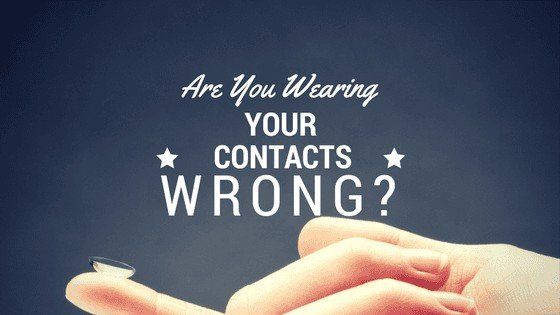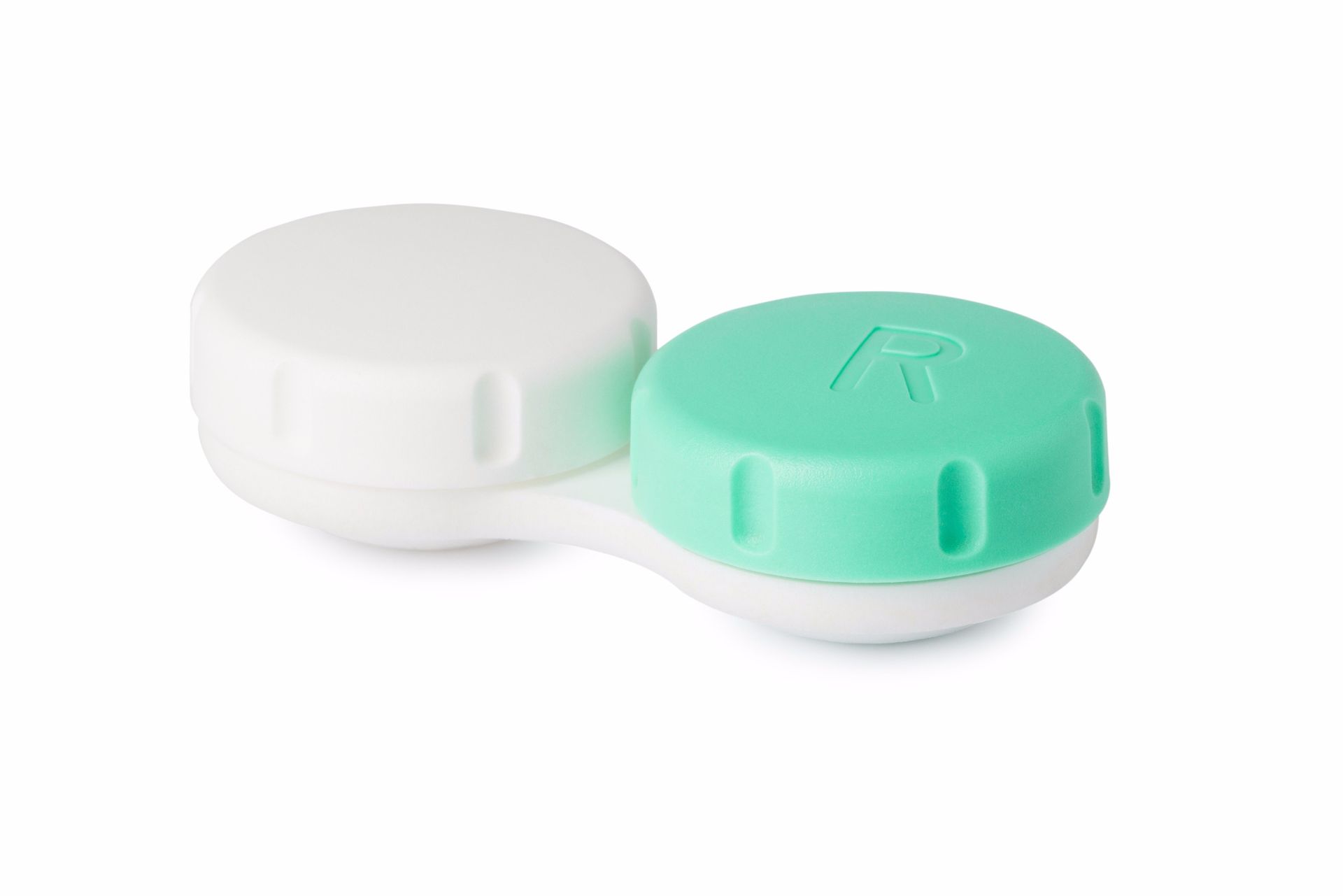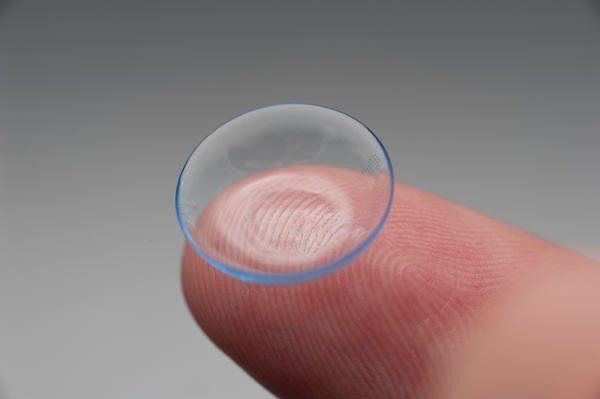Are You Wearing Your Contact Lenses Wrong?
The Do's and Don'ts of Contact Lens Wear
We have all made a questionable decision or two at least once in our lives. However, when it comes to your eyes and vision, this is one area where it is always better to be safe than sorry. Here are a few of the most common mistakes made by contact lens wearers and a safer alternative to keep those peepers healthy.
DON’T - Clean your contact lens case with water. It may seem like the logical thing to do, but in general, soft contact lenses and water should be kept away from one another as much as possible. Cleaning your case with water can introduce a plethora of microscopic bacteria that could take up home in your case, then on your contacts, and ultimately your eyes.
DO - Clean it with contact lens solution instead. Instead of using water, empty out any old solution that is in your case and use your contact lens solution to rinse out the wells. Then, wipe the wells with a clean lint free towel and leave the lids off in a safe spot for the case to air dry.
DON'T- Keep the same contact lens case for too long. Even if your case appears to be clean, don’t let it fool you. Bacteria and microorganisms create a substance called biofilm that coats the inside of the case and can’t be seen by the naked eye. This film can contaminate your lenses and prevent the solution from properly cleaning them.
DO- Change your case regularly. It is recommended to change your contact lens case every 3 months. A good way to remember this is to change it out when you change your toothbrush.
DON’T- Top off your old solution. Adding fresh solution to solution that has been sitting overnight or longer is not only a waste, but it’s unsanitary for your lenses as well. Think of it in terms of a sink full of dirty dishwater. Just because you add fresh water, it doesn’t make that dirty water any cleaner.
DO- Change your solution every day. Make sure to rinse out your case with solution, not water, and then add fresh solution AFTER emptying out what was in the case previously.
DON’T- Let your contacts sit in the same solution for days at a time. If you only wear your contacts a few times a week or less, it might seem ok to just let them sit in their case until you’re ready to put them back on. However, the majority of soft contact lens cleaners are only manufactured to safely store your lenses for 24 hours.
DO- Check the manufacturer’s recommendations for storage. Remember it is better to be safe than sorry, so always err on the side of caution if you are unsure, and change the solution daily even if you haven’t worn the lenses. Another option is to talk to your doctor about a daily wear lens that you discard at the end of every day. This would eliminate the need for storage altogether.
DON’T- Sleep in your lenses. According to the American Optometric Association , those who sleep in their lenses are at a 5 times higher risk for corneal infections and ulcers - a painful bacterial infection of the cornea similar to an abscess.
DO- Take your lenses out every night. While there are lenses that are approved for overnight wear, these do not decrease your risk for infection. The safest option is always taking them out nightly.
DON’T- Over wear your contacts. Too often contact lens wearers will wear the same pair of contacts until the lenses “start to bother them”. The problem with this - other than a buildup of bacteria and increased risk for infection - is that these lenses are only made to last for a certain amount of time. For example, a two week lens will start to break down if worn longer than the recommended two weeks. This also counts for those who do not wear their lenses every day. The time starts from the moment you open the pouch and take the lenses out, not just the amount of times you have the lenses on.
DO- Follow your doctor’s instructions for contact lens replacement. My favorite advice on this topic comes from Thomas Quinn, O.D. who compares waiting until lenses become bothersome to change them to only changing your underwear when they bother you - which hopefully, most of you don’t do!
DON’T- Rub your eyes while wearing contacts. If you’re an allergy sufferer this may be easier said than done, but rubbing your eyes is a big no-no - especially if you are wearing contact lenses. Not only will this cause irritation, but the friction between the lens and your eye could actually scratch your cornea. Furthermore, frequent rigorous rubbing of the eyes is associated with a condition called keratoconus where the cornea becomes misshapen, and vision is greatly affected.
DO- Talk with your doctor about allergy relief. He or she should be able to provide you with some methods to help alleviate your discomfort. In the meantime, cool compresses work wonders to relieve itching. You can also apply light massaging motions to your closed eyes with just the tips of your fingers.
DON’T- Allow water to come into contact with your lenses. This includes cleaning them with water, not drying your hands completely after you wash them, and even swimming and showering while wearing them. Water can cause the soft lens material to swell and stick to the eye causing pain and potential damage to the eyes. Even if the water is clean enough to drink, most water is not completely germ free. For example, there is a type of germ named Acanthamoeba that can be found in tap water, lake water, hot tubs, and other various water sources that will basically eat right through the front surface of your eyes causing permanent damage and possible blindness.
DO- Keep your contacts away from water and only clean them with FDA approved solution. It is also recommended that you don’t swim or shower while wearing contacts.
DON’T- Wear your contacts if your eyes are irritated. A little redness and itching could be the result of something minor such as seasonal allergies, but it could also signal something more serious like a corneal infection, abrasion, or other potentially dangerous eye conditions.
DO- Take your contacts out as soon as possible if you are experiencing any discomfort. It would also be a good idea to give your eye doctor a call to see if your symptoms warrant a visit. Always remember - when in doubt, take them out!
Make sure to share this post if you found it helpful!






